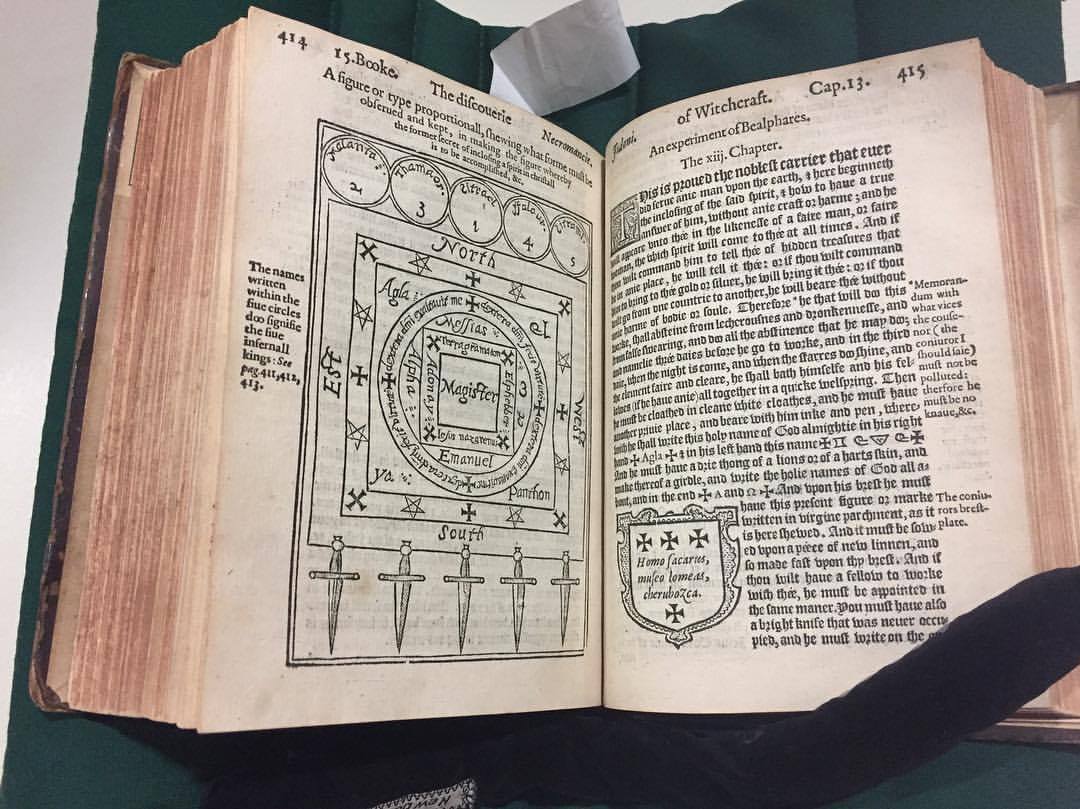Collecting Grimoires, Spell Books, and Witchcraft Tomes
/Witches and spells conjure notions of women in black or events like the Salem Witch Trials, yet there is a rich history and culture of witches and witchcraft that exists worldwide and maintains a vibrant community of practitioners and adherents. With these practices come an amazing array of texts to provide guidance and, yes, even spells. As part of the programming at the Brooklyn Antiquarian Book Fair, William Kiesel and Pam Grossman will present “Collecting Grimoires, Spell Books, and Witchcraft Tomes” at 2pm on Saturday the 7th.
The differences between grimoires, spell books, and witchcraft tomes are not strict and there are many points of overlap. “Grimoire come from French that means ‘book of magic’ but it derives from the word ‘grammar’ so it refers to a grammar of magic,” Kiesel explains. “Typically, grimoires are often manual of practice that give recipes, operations, rituals and perhaps even spells.” Spellbooks, Kiesel says, are more associated with folk magic and practice while witchcraft tomes are more like a belief system or “what it means to be a witch.”
Interest in these texts has seen a resurgence in the past ten years, according to Kiesel. Now, with modern technology, people can share texts, and small publishers around the world are printing new grimoires.
When asked why people are drawn to grimoires and other such texts, Kiesel explains, “people are interested in being the best they can be. A lot of the old grimoires promise all sorts of things, such success in a career, love, or a long life.” He considers these books more like guides than acutal spellbooks, since the practitioner “will gain skills regardless of whether the magic is done or not.”
Moreover, Kiesel says that these texts allow readers to interact with the spiritual world on a personal level. “People want to have spiritual life, but they may be distrustful of the traditional religions. Grimoires allow you to approach it on an individual basis.”
These books can possess a talismanic quality, according to Kiesel. Some people have collected grimoires and other texts simply for the power of having them.
Notable institutional collections of grimoires and other texts include the Cornell University Library, the Museum of Witchcraft and Magic in Boscastle, UK, and The Ritman Library, Bibliotheca Philosophica Hermetica in Amsterdam, Holland.
For his BABF talk, Kiesel will explore the rich history of these texts and by way of examples such as the Petit Albert, an 18th century Grimoire, and the Key of Solomon, an Italian Renaissance grimoire said to be written by King Solomon. Kiesel is both a collector and a publisher of grimoires through his Ouroboros Press. Fellow lecturer Pam Grossman will be presenting a more contemporary view of witchcraft; she has published several books on modern witchcraft including the recent Waking the Witch: Reflections on Women, Magic and Power.



